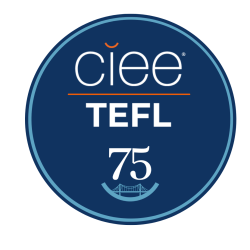5 Ideas for Teaching Black History Month in the EFL Classroom
February in the United States is Black History Month, a time for Americans as a whole to honor African-Americans’ contributions to our nation and to remember the struggles and triumphs of African-American history. All over the U.S., teachers decorate bulletin boards, show videos, and create what they hope will be meaningful activities toward understanding and honoring Black history.
But what about EFL teachers abroad? How many EFL teachers are creating Black History Month lessons? I did a quick, unscientific poll of colleagues and friends on Facebook, and people either didn't respond at all, or responded to say that they had never taught a lesson on Black History Month. Indeed, while I was teaching high school in China, I did not teach it either, and I regret that. I encourage all ESL/EFL teachers to find creative ways to use Black History Month to encourage tolerance, understanding, and respect.
Why should EFL teachers incorporate Black History Month into their lessons?
As Americans abroad, EFL teachers are representatives of America, whether we want this responsibility or not, whether we feel qualified to shoulder this responsibility or not. For some of our students, we may be the only American they know. Black history is American history. Black culture is American culture. We may not be experts in these topics, but we can at least make an effort to reveal the diversity of our country and of the world to our students, and to engender cultural understanding on as many levels as possible.
How can ESL / EFL teachers incorporate Black History Month into their lessons?
I’ll share a few ideas, but I encourage you to use your creativity to create lesson plans that will speak to your learners and meet their needs, whatever their English level, whatever the objectives of your course. It would also be wonderful if you could all share your ideas in the comments so that we can build up a library of lesson plans and activities.
Teaching a writing course?
Check out this “edit-a-thon” at Howard University, brought to my attention by Shawn McRae, an EFL teacher in the UAE. The university community is editing Black History related Wikipedia entries. Find more info and resources here. I love this idea and was thinking about cool ways to use this with ELLs. I think I would show this to students and ask them why they think this editing might need to happen. This is an opportunity to talk about the need to critically evaluate information and consider the source. It also helps explain why Wikipedia is not an appropriate source for a paper. After this awareness raising activity, I might create a similar editing activity by providing an accurate, level-appropriate reading on a topic related to Black History and a printed example of an inaccurate or incomplete wiki entry on the same topic. Learners need to edit the wiki entry based on the accurate information I've provided. I’d create my own pretend wiki entry or print one off the Internet if I could find one easily. This is a challenging reading and writing lesson for upper intermediate to advanced students, particularly suited to students on an academic track.
Teaching listening?
There are lots of ways to utilize videos for listening practice. Even a short excerpt can be challenging and interesting. Here are a few suggestions for excellent videos on the Civil Rights Movement. Students will practice their listening skills while learning about American history. Try one of these:
America’s Civil Rights Movement: A Time for Justice is a documentary from the Teaching Tolerance website, suggested by Marcus Van, an ESL teacher in California. The Teaching Tolerance website is full of other wonderful classroom resources that focus on social justice from a variety of perspectives, too.
Eyes on the Prize, also recommended by Marcus, is a well-known video series on the Civil Rights movement.
Like to use music in your lessons?
Play some jazz! You can bring in a reading or video to give the music some context. Ask students to infer the meaning of the lyrics, or have them fill out a cloze if the lyrics are clear when listening. Another idea is to teach some slang that you find in the song if it’s still used today. Have them guess at the meaning first, inferring from the context. These are just a few suggestions. I’m sure many of you have lots of great ideas for using music in your teaching. Here are some links to get you started with jazz:
This article from an online men’s magazine (with the unfortunate name The Art of Manliness) provides a good overview of jazz with lists of artists and links to performances.
The Jazz in America website has lots of info and includes lesson plans.
Got an extensive reading program or want to start one?
Try using one or more of the books on this list on Amy Poehler's Smart Girls website. This page was also recommended by Shawn McRae and has lots of great female positive stuff in addition to this post on Black History Month.
Teaching in the U.S.?
Many ESL teachers in the U.S. have the opportunity to organize a field trip to a place of significance related to Black history and culture. For example, Sarah Springsteen, an ESL teacher in Kansas, is bringing her students to the Brown vs Board of Education historical monument in Topeka for a guided tour and fill-in-the-blank scavenger hunt worksheet. If you do something like this, be sure to prep your students with relevant, level-appropriate readings and/or videos to provide the background knowledge and vocabulary necessary for a meaningful experience. Afterwards, help students make connections with current events, the experiences of their own cultural groups in the U.S., and/or minority groups in their home countries. This helps learners understand more about the country they are living in and the ways in which different cultures struggle and succeed in coexisting.
A link to more links: If you don’t know Larry Ferlazzo's website, I highly recommend checking it out. This is a very high quality resource for English Language instructors in general. Check out this list of the best websites for teaching African-American history.
Not just for a month
Encouraging tolerance, understanding and respect is not limited to a month-long focus on African-American history. Black History Month is a good place to start. Even better is to thread all sorts of cultural and historical perspectives throughout every course that we teach by representing diverse voices in our teaching materials on a regular basis. It is my opinion that the best way to encourage peace among all people is a combination of information about and regular exposure to people who are different from ourselves. Specific lessons about a particular group’s contributions and history, in this case Black History Month activities, provide the information and context. Regular inclusion of voices representative of a variety of people throughout a course provides the ongoing exposure that says, “All types of people are part of the fabric of our society.”
If you have ideas or experiences to share regarding teaching Black History Month to English Language Learners, please share in the comments. I’m especially curious about teachers’ experiences abroad. What did you do in your class? What were your students’ reactions? Do you think EFL teachers should teach Black History Month?

